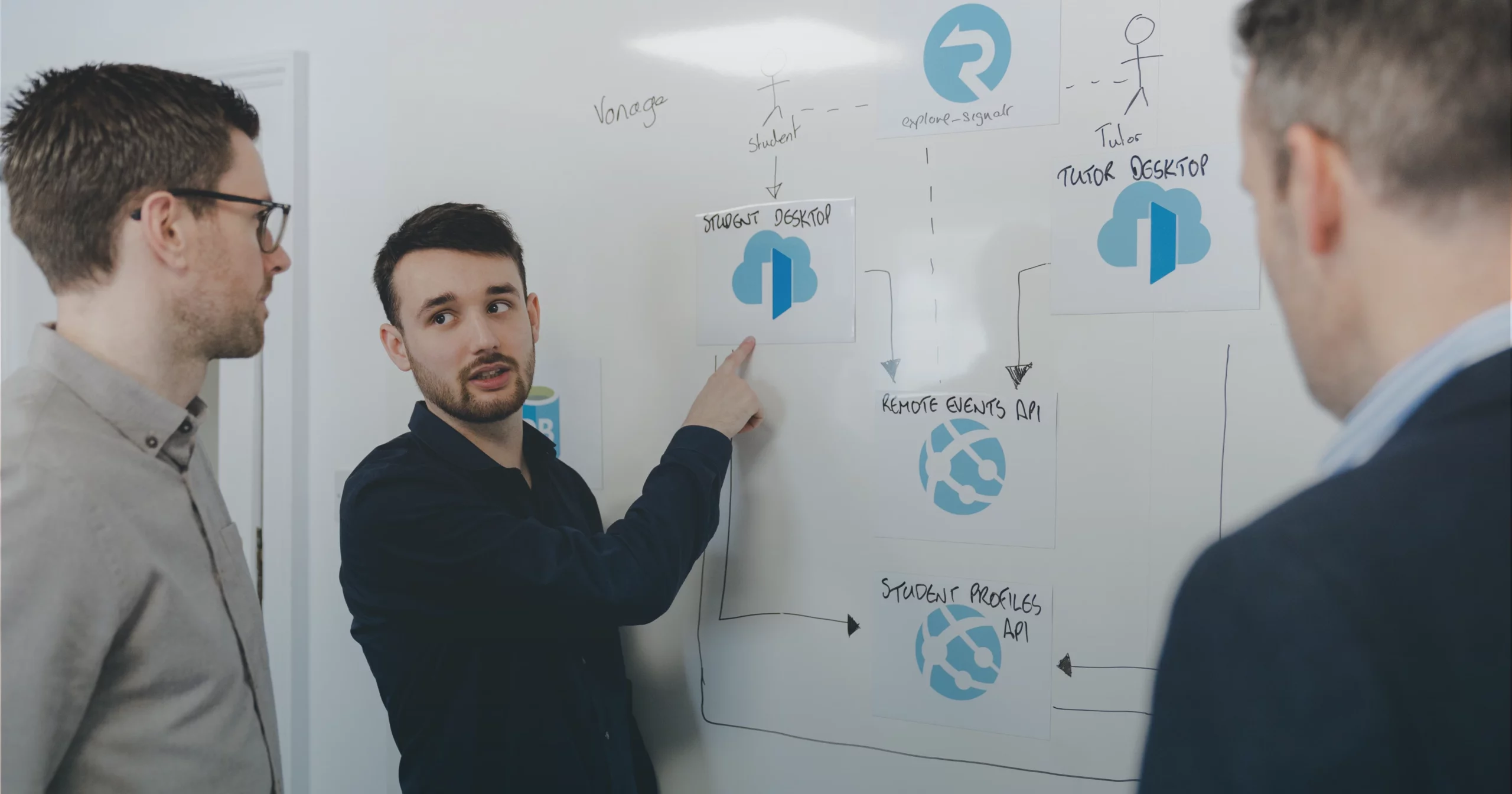5 Steps to Migrating to Cloud Native Application Architectures

Recent data shows that 88% of businesses were using cloud application development services in 2018 and a further 10% were in the trial stage.1 Transitioning to cloud-native technologies is becoming the norm, and is essential if you want to run your business efficiently and remain competitive in your industry.
Adopting cloud infrastructures is a smart investment to make when you’re upgrading the applications your team is already familiar with. It’s also a great way to transition to a fully cloud-native process by providing new, seamless integrations where needed.
What is cloud migration?
Put simply, cloud migration is the process of moving applications, data, and other IT elements to a cloud computing infrastructure. For example, you may decide to move all of your business applications from a local on-premises data center to the public cloud.
Common cloud migration challenges
Migrating to cloud native technologies can seem daunting and complex, especially when there are so many factors to consider. Common cloud migration challenges include:
- Financial cost
- Adoption resistance
- Skill shortage
These challenges can be overcome by having a solid cloud migration strategy in place. The process can also be made simpler by partnering with an experienced solutions provider.
In this guide, we are going to discuss five steps you should take when migrating to cloud-native application architectures to ensure a smooth transition.

Step 1: Understand your motivations
The first step to successful cloud migration is understanding why you’re choosing to migrate, and what your business objectives are. This will make sure that you are focusing on your core objectives and goals throughout the migration process.
4 reasons to migrate to the cloud
- Reduce costs: Cloud computing is one of the most cost-effective ways to operate, maintain, and upgrade your IT infrastructure. In a recent survey, 95% of respondents said that cloud native technologies would reduce both setup and maintenance costs.2
- Improve security: Cloud architecture is more secure than on-premises, and both private and public cloud providers invest heavily in security innovation.
- Support agile working: Working practices are changing rapidly, and approximately 71% of businesses are adopting agile approaches.3 Cloud platforms support flexible working as they can be accessed from anywhere, on a wide range of devices.
- Gain a competitive advantage: Cloud native technologies allow you to launch new applications and services quickly. This means you can meet customer expectations and stand out from the competition.
Suggested reading: Check out our blog post to learn how cloud native applications take businesses forward.
Pro tip: Building cloud native software and complying with the necessary business governance can be difficult. Partnering with an experienced cloud solutions provider will remove this stress and ensure a seamless transition.
Step 2: Analyse your current applications
Analysing your current applications and understanding their limitations is a crucial step in the cloud migration process. This will allow you to assess the operational value of the new system by comparing it to your existing applications.
You will gain a visible overview of your systems, allowing you to see what’s needed to close the gap between what you currently offer and what you’re aiming for. This helps you see what’s needed next, whether that’s innovating new cloud-native software applications or modernising legacy applications.
There are a few key tells that you’re dealing with a legacy system:
- They operate unreliably/perform poorly.
- They’re nearing end-of-life, making continued support challenging.
- Upgrades and updates are costly, slow and require workarounds.
Pro tip: To learn more about how legacy systems are costing your business growth, check out our eBook.
Step 3: Create a game plan
Now that you know what needs to be done, you have to outline what the best practice might be. This could be anything from determining whether apps should be migrated or modernised, to which apps to scrap and replace, and what resources each process will take.
You will also need to decide whether a microservices architecture or monolithic applications are more suited to your business needs.
- Monolithic applications: Built as a single unified unit which makes it easier to operate and manage. However, this means the entire application must be updated when you want to update part of the service. Therefore, a lot of businesses choose to migrate traditional monolithic applications to a microservices architecture.
- Microservices architecture: A collection of smaller, independent services that are maintained separately, meaning you won’t need to update the entire application to update an individual service.
The key to creating a solid cloud migration plan
Mapping out everything that will go into your migration and creating a plan is a time-consuming and difficult process.
Finding which cloud computing platforms fit your needs is integral to a solid cloud migration plan. Microsoft Azure containerised development support, as well as their advanced security provisions, make it the ideal choice for digital transformations on any scale.
Pro tip: Building cloud native software and complying with the necessary business governance can be difficult. Partnering with an experienced cloud solutions provider will remove this stress and ensure a seamless transition.
Step 4: Transform your applications
Now is the time to start migrating, modernising, and transforming your existing applications to a cloud-native system.
The migration will be tailored to your business needs. For example, you may choose to migrate specific applications or move your entire infrastructure to the cloud.
The importance of having a security strategy
You also need to create a strategy to ensure that security and regulatory compliance requirements are met.
According to experts at Cloud Academy: “Cloud cybersecurity requires a different approach to security than on-premises. You’ll need to think about traffic within your cloud, but also access to the cloud from all your users, and how to leverage “least privilege” access.”4
Why you should partner with a solutions provider
This stage of the process requires real expertise as well as the option of managed application support to ensure your applications run smoothly. You should consider hiring IT specialists with expertise in cloud software development and building applications.
Step 5: Keep growing!
When your migration is complete, you should look to ensure your applications continue to perform well and that you’re taking full advantage of your cloud-native system.
You can also start to develop new cloud-native applications to scale your business seamlessly and take advantage of new opportunities as they arise.
Maximise your return on investment
A solutions provider can ensure you’re maximising the benefit potential of your cloud system. They can also build and run new applications and help you adopt cloud-native technologies in the future, e.g. continuous software delivery.
When you partner with an expert solutions partner (one with cloud-native computing foundations and vendor-neutral certifications) they will take the time to get to know your business and take a personalised approach when building application software.
Suggested reading: Want to learn what to look for in bespoke application support? Check out our recent blog.
Talk Think Do makes cloud migration a breeze
Migrating to cloud native application architectures can be a challenge, but it doesn’t need to be! Talk Think Do develops cloud solutions that are critical to business development. From creating bespoke applications that fit your needs to providing managed support after go-live, we’ll ensure you’re making the most of your cloud-native approach, allowing your business to seamlessly grow at scale.
Our team can help you exploit new business opportunities by innovating your existing applications so you can reduce risk and increase agility. We support long-term growth by offering personalised cloud migration strategies coupled with dedicated customer support.
Book a consultation with our experts if you would like to learn more about migrating to cloud native technologies and its benefits for your business.
1 https://www.cloudindustryforum.org/
Get access to our monthly
roundup of news and insights
You can unsubscribe from these communications at any time. For more information on how to unsubscribe, our privacy practices, and how we are committed to protecting and respecting your privacy, please review our Privacy Policy.
See our Latest Insights
What’s the Difference Between Software Application Maintenance and Managed Application Support?
Avoid confusion and get the right level of support for your software applications. If you’re running a custom-built application—whether it’s a .NET backend on Azure, a React web app, or a React Native mobile solution—keeping it healthy over time is just as important as building it well in the first place. That’s where software maintenance…
Why Designing Better AI Agents Means Rediscovering Object-Oriented Design
In the early days of my software career, I was deeply influenced by the work of Grady Booch, James Rumbaugh, and Ivar Jacobson—the pioneers whose ideas eventually formed the foundation of Unified Modeling Language (UML). Before UML, each of them had developed their own approach to software modeling: Rumbaugh had the Object Modeling Technique (OMT),…
Agentic Design: Your AI Agent Advantage and the Hidden Assets Your Business May Already Have
Artificial Intelligence (AI) has revolutionized various industries by automating complex tasks and providing intelligent solutions. The ability of AI agents to perform dynamic tool selection, interact with their environment, and engage in self-reflection to improve their processes highlights their adaptability and cognitive skills, which are integral to agentic workflows. This article explores the various applications…
Legacy systems are costing your business growth.
Get your free guide to adopting cloud software to drive business growth.





